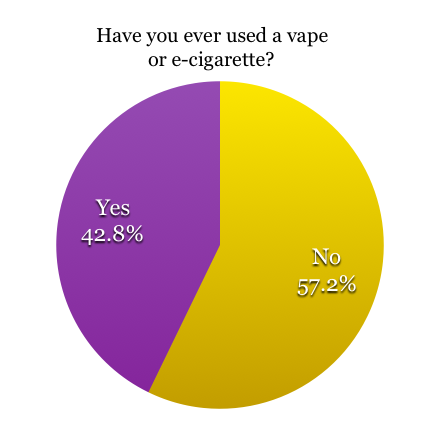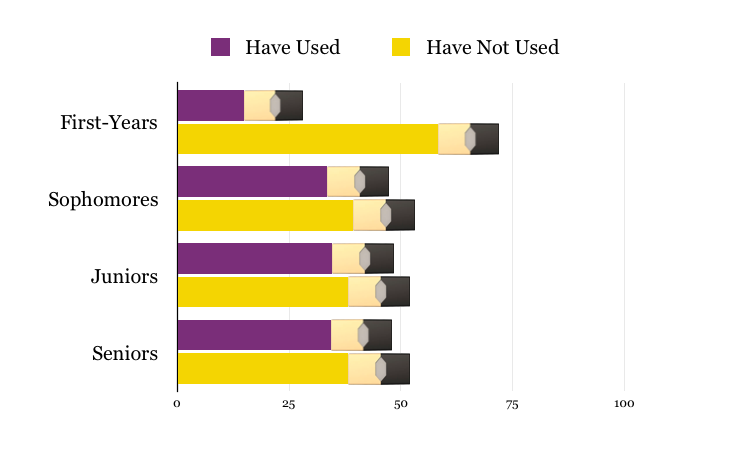
The Record conducted a survey on student electronic cigarette (e-cigarette) and vape use, receiving 159 responses. From this data, 42.8 percent of students responded that they had used a vape or e-cigarette at least once in their lives. The rate reported in the 2017 College Health Survey was significantly lower, with only 21.1 percent having reported using a vape at least once.
In the Record survey, 25.8 percent of students reported use in the past 30 days, while 13.5 percent reported doing so in the College Health Survey last year.
Student perceptions of vapes overestimate their prevalence – in the College Health Survey, the average student estimate of how many of their peers used vapes was 70 percent. Students also generally see vapes as no more dangerous than cigarettes. 92.4 percent of respondents to the Record survey said that they believe vapes to be much safer, a little safer or about the same as traditional tobacco products.
According to Laini Sporbert, the College’s health educator, this perception is generally true but should not belie the amount that remains unknown about the effects of vaping. “It’s certainly safer than rolling something up, putting it in your mouth, lighting it up and inhaling,” Sporbert said. “It’s safer in terms of the number of chemicals you’re putting into your body, but it remains to be seen if those chemicals are safe.”
The percentage of students who had ever used a vape was roughly 48 percent in the Record survey for current seniors, juniors and sophomores. For first-year students, however, it was lower, at 28 percent. For students who had used a vape, 58 percent had inhaled nicotine at the time of their last use, 33 percent had inhaled marijuana or hash oil and nine percent had inhaled just flavoring. There was no significant difference found in usage rates between athletes and non-athletes.
The Record’s survey did not assess usage based on gender, but the College Health Survey showed slightly higher rates of usage amongst men than women.
The proportion of respondents in the Record survey who said they had used a tobacco product at least once, 37.7 percent, is not significantly different than the proportion who said they had ever used a vape or e-cigarette. However, the proportion who said they had used a tobacco product in the past 30 days, 12.9 percent, was significantly lower than those who had used a vape in the past 30 days.
Vaping poses a concern due to nicotine’s addictiveness, though it is not necessarily the most pressing substance use issue that is present at the College. “Certainly we’re more concerned about substance use that causes immediate harm to the individual and the community,” Sporbert said. “But the thing that concerns me is the risk of addiction, because nicotine is highly addictive; if we talk about chemicals and addiction hijacking the brain from an early age, any use before age 25 is setting the brain’s pathways up to get hooked on something.”
When it comes to the College’s fire safety policy, e-cigarettes are treated similarly to tobacco products. The College’s smoking policy, which prohibits smoking in College buildings or within 25 feet of them, states, “This policy includes the smoking of tobacco products and the use of electronic smoking devices. Electronic smoking device means an electronic device that can be used to deliver nicotine or other substances to the person inhaling from the device, including, but not limited to, an electronic cigarette, cigar, cigarillo or pipe.”









